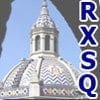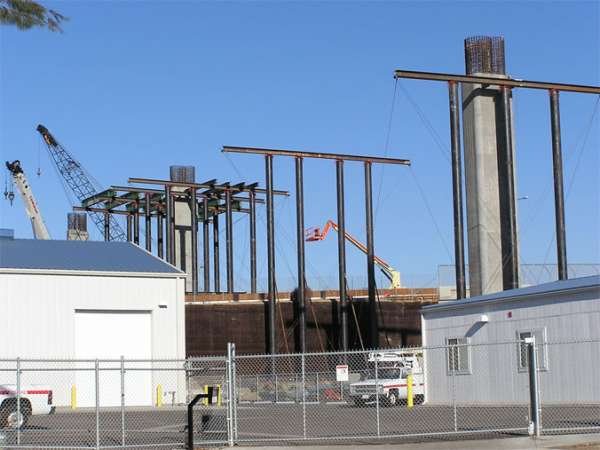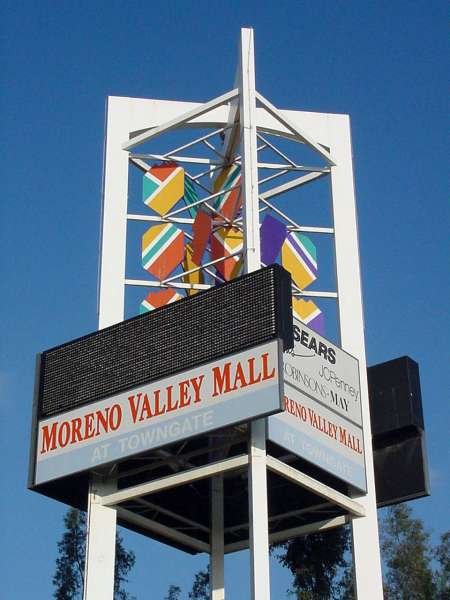Then & Now – Galleria at Tyler
Since its opening as the single-level Tyler Mall in 1970 and re-christening as the two-level Galleria at Tyler in 1991, Riverside’s primary shopping center remains one of Inland Southern California’s top retail destinations. Currently undergoing its third major expansion, the Galleria at Tyler has flourished as both the city and the Inland region have grown and prospered.
Below is Part 1 in a brief history of the Riverside mall, which is currently owned and managed by General Growth Properties, Inc.
1965 – Mall Proposals
Although the Tyler Mall did not open until October 1970, development of it began in 1965 as representatives from regional and national department stores began taking interest in two competing mall developments proposed for Riverside.
The first proposal, a 66-acre development by Beverly Hills-based Hunter Penn, was planned for the southeast corner of Magnolia Avenue and Tyler Street. The three-anchor, enclosed shopping center was preferred by two department stores, May Co. and Los Angeles-based The Broadway:
Broadway and May Co. executives say they plan to begin building department stores on the 66-acre Hunter Penn shopping center site at Magnolia and Tyler in Riverside in late 1966 or early 1967.
Riverside Daily Enterprise- September 9, 1965
The second proposal, which was approximately 2 miles northeast of the Tyler site, was a 113-acre development planned for the southeast corner of Magnolia Avenue and Monroe Street on land that comprises a portion of California Baptist University. Proposed by Riverside-based Marcus W. Meairs Co., “Magnolia Mall” was conceived as a four-anchor, enclosed shopping center and also gained the interest of two department stores, JCPenney (which had a stand-alone store downtown) and Los Angeles-based Buffum’s:
… J.C. Penney Co. announced that a lease is likely to be signed soon to locate a $6 million store at the 113-acre Magnolia Mall shopping center at Adams and Magnolia.
On Sept. 4, Buffum’s Department Stores revealed that Meairs has a letter committing Buffum’s to a store at the Magnolia Mall center if certain other major stores also become tenants.
Riverside Daily Enterprise – November 13, 1965
Retail experts at the time agreed the city could not support both proposals, particularly with two similar-sized malls also proposed nearby in San Bernardino (Inland Center) and Montclair (Montclair Plaza). Likewise, those proposals included May Co. and Broadway stores, with the Montclair site also controlled by developer Hunter Penn.
In mid-1966, both The Broadway and May Co. bought out Hunter Penn’s interest in the Montclair and Riverside sites with the Tyler property reportedly costing $2 million, or an average of $33,000 per acre.
Although Riverside originally approved zoning for both the Tyler and Magnolia malls, which actually led to a delay in construction, the Tyler site eventually became the preferred site. Its location on what was then sheep grazing land sat adjacent to the Tyler Street exit off the Riverside Freeway.
With the delays, initial site preparation and development of infrastructure did not begin until early 1968. And in February 1969, with Los Angeles-based developer Ernest W. Hahn now on board, plans were officially released:
Plans for immediate construction of a $45 million regional shopping center, officially named Tyler Mall, at Tyler and Magnolia in Riverside were formally made public … participants are Broadway-Hale Stores Inc., May Co., J.C. Penney Co., and Ernest W. Hahn…
Riverside Press-Enterprise – February 5, 1969
Major construction began in October 1969 with the mall officially opening one year later on October 12, 1970, ushering a new era of shopping to Riverside. Already familiar with the mall concept via the 1956 opening of the outdoor Riverside Plaza — one of the first mall-like developments within Southern California — the city welcomed this new enclosed version with open arms — and open pocket books.
1970 – Tyler Mall
With 68 original stores (soon to be 85), including two department store anchors (The Broadway, JCPenney, plus a third pad) and a 61,000 square foot, two-level F.W. Woolworth (with Harvest House), the 800,000 square foot Tyler Mall was nearly twice as large as its older cross-town cousin. Several exterior buildings, including a twin theater (United Artists), free-standing bank (United California Bank*), two restaurants (Howard Johnson’s, Farrell’s Ice Cream Parlour), two auto centers (JCP, Broadway*) and a gas station rounded out the property.
Opening: October 12
Cost: $45 million
Anchors: The Broadway, JCPenney, May Co. (1973)
Stores: 85
Size: 880,000 sq. ft.
Land: 66 acres
Developers: Ernest W. Hahn, Broadway-Hale, May Co.
Mall Architect: Jon Jerde of Burke, Kober, Nicolais and Archuleta, A.I.A., Los Angeles
After a three-year delay in finalizing a new interior prototype, the May Co. building opened in July 1973, anchoring the south end of the mall. Containing a restaurant and cocktail lounge, the $5.5 million store was among the first stores to introduce the company’s new retailing concept.
With the exception of The Broadway and May Co. buildings, the mall’s original exterior was rather conservative, uniform and perfunctory. Rough textured, beige brick dominated the overall look with walls hiding the exterior utility corridors. Four entrances, two on each side, graced the north and south ends of the mall near the department stores. At the center of the 1000-foot linear mall was a short corridor housing more stores and the main entrance**, which faced west toward Tyler Street (where Nordstrom stands today).
Of particular interest was the striking architecture of The Broadway building. Designed by Los Angeles-based architectural firm of Charles Luckman & Assoc., the building’s cantilevered*** design remains unique even today. Also of note, was the store’s interior. Designed by Jim Van Schaak, the interior was honored as “Department Store of the Year” in the national “Store Interior Design” competition. (In late 2006, the building was vacated by Macy’s for the freeway-friendly Robinson’s-May building. As of mid-2007, plans for reusing the building are pending.)
Unlike the exterior, the mall’s original interior had a bit of late 60’s flair, albeit with a modernist touch. Colorful skylights, hanging light clusters, abstract, high-gloss flooring, bark-filled planters and wooden, semi-circular benches added a whimsical touch to the mall.
For much of the 1970s and 1980s the mall performed well, but many felt there was at least one missing element — an upscale department store. Although Buffum’s initially appeared interested in the market in the late 1960s and Bullock’s considered a store in 1980, economic conditions — and eventual mergers — kept both from making firm commitments:
“…we’re interested because of the population growth and eventually we’ll get there.”
Bullock’s executive
Riverside Press-Enterprise – September 22, 1980
In 1987, following strong population growth in the region and a successful 1986 opening at a newly-expanded Montclair Plaza, Seattle-based Nordstrom began showing interest in Montclair’s sibling mall in Riverside, which was also working to expand. However, shoppers in Riverside would have to wait a few more years as obstacles threatened to derail the proposed expansion.
Continue to: Part 2
Related
- Flash: The Broadway (1970) to Macy’s (vacant/2006)
- Flash: May Co. (1976) to Macy’s (2007)
- Photo Gallery: Galleria at Tyler
- Official Web site: Galleria at Tyler
Images as noted courtesy of: * Riverside Public Library, ** Greater Riverside Chambers of Commerce, *** Jim Van Schaak, **** Donahue-Schriber
Sources: Galleria at Tyler, General Growth Properties, Donahue-Schriber, City of Riverside, Riverside Public Library (Local Subject Files), Riverside Press-Enterprise, Los Angeles Times, “Colony for California” (Tom Patterson), Greater Riverside Chambers of Commerce









2 Comments